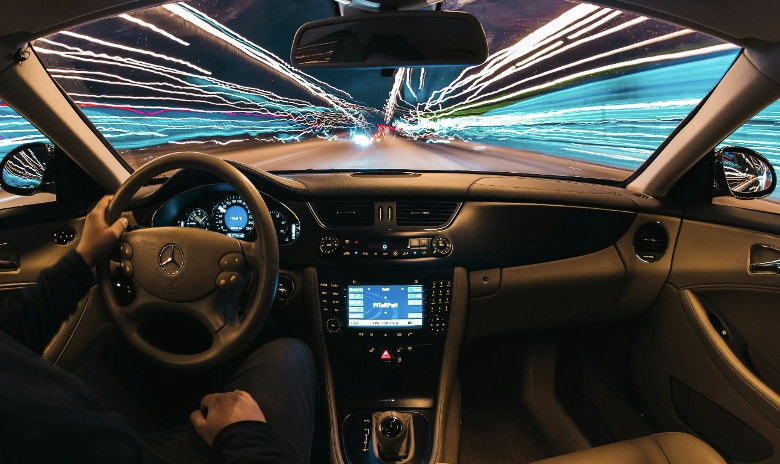
The automotive industry is at the precipice of a technological revolution, with artificial intelligence (AI) driving transformative changes in design processes, cybersecurity frameworks, safety, and driver experiences. Industry leaders are embracing the shift, with 79% anticipating substantial transformations within their organizations and sectors over the next three years due to generative AI technologies.
Fueling the SDVs Era
As the automotive industry evolves from a hardware focused platform to a software-driven era, Artificial Intelligence (AI) is playing a transformative role in how vehicles are designed, built, and experienced. From enhancing safety to creating more personalized driving environments, AI is helping automakers cross traditional boundaries—pushing the limits of what cars can do and how they interact with drivers, passengers, and the world around them.
At the center of this shift is the rise of the Software-Defined Vehicle (SDV)—a vehicle in which software governs most functionalities, from infotainment to safety systems. Unlike conventional vehicles, SDVs are designed to evolve. Through over-the-air updates, manufacturers can deploy new features, fix bugs, and improve performance remotely. However, it’s the integration of AI that turns SDVs from software-enabled machines into truly intelligent mobility platforms. AI allows the vehicle to process real-time data, learn from user behavior, and adapt to its environment, enabling a level of decision-making that was previously unthinkable.
As customers increasingly demand seamless, digital, and integrated experiences, SDVs are expected to mark a global automotive transformation from a hardware to a software-centric approach. Indeed, Deloitte research predicts that at least 90% of new vehicles released to the market by 2029 will be software-defined.
Enhancing Safety and Experience
While the vision of AI-powered vehicles is bold and ambitious, it’s already taking shape in real-world applications.
One of the most critical impacts of AI in automotive is safety. AI enables the vehicle to perceive and react to its surroundings faster and more accurately than any human driver could. Advanced Driver Assistance Systems (ADAS) like adaptive cruise control, lane-keeping support, and automatic emergency braking rely on AI to interpret sensor data and make split-second decisions that help avoid collisions. AI can also detect signs of driver fatigue or distraction by analyzing facial cues and behavior patterns, issuing alerts or even intervening if necessary. Furthermore, by constantly monitoring vehicle health, AI enables predictive maintenance—identifying potential issues before they become hazardous, ultimately preventing breakdowns and improving overall road safety.
Revolutionizing the Driver Experience
Beyond safety, AI is redefining the driving experience itself. Vehicles can now learn and remember a driver’s preferences, from seat position and climate control settings to navigation habits and entertainment choices. Natural language processing has improved dramatically, allowing drivers to control vehicle functions through intuitive voice commands, reducing distractions, and making the interface more user-friendly. AI-powered navigation systems go beyond simply finding the fastest route—they incorporate real-time traffic data, weather conditions, and driver behaviour to deliver smarter, more efficient journeys. As the vehicle’s software evolves over time, new features and improvements can be continuously added, ensuring that the driving experience keeps getting better even after the vehicle leaves the factory.
Opportunities and Challenges
However, this leap forward also brings a set of complex challenges. On one hand, AI opens up a wealth of opportunities—from enabling faster innovation cycles and reducing emissions through smarter energy use to creating more inclusive mobility options for the elderly or people with disabilities. It also supports the emergence of new business models, such as personalized mobility services or data-driven platforms that deliver tailored in-car experiences. On the other hand, the rise of AI raises pressing concerns around data privacy, cybersecurity, and ethics. As vehicles collect and process vast amounts of user and environmental data, safeguarding that information is essential. Ethical considerations also come into play, especially in scenarios where AI must make critical decisions in milliseconds. Moreover, infrastructure readiness varies widely across regions, meaning the full potential of AI—particularly in areas like vehicle-to-infrastructure communication—cannot yet be fully realized. At the same time, regulatory frameworks are still catching up, and automakers must navigate a fast-evolving legal landscape to ensure compliance and consumer trust.
The Road Ahead
AI is catalyzing unprecedented transformation across the automotive industry, from accelerating development timelines and streamlining factory operations to enhancing cybersecurity, personalizing in-car systems, and enabling next-gen mobility features.
Translating these possibilities into scalable, real-world outcomes will require not only advanced technologies but also deep cross-functional expertise and close collaboration across the ecosystem. As the industry moves toward a more intelligent and connected future, those equipped with the right capabilities and the right IT partners will be best positioned to lead the transformation.




